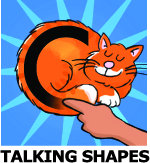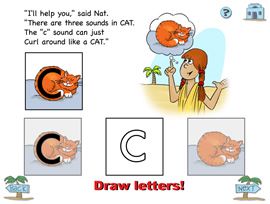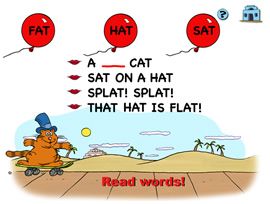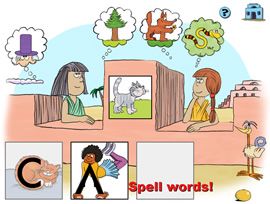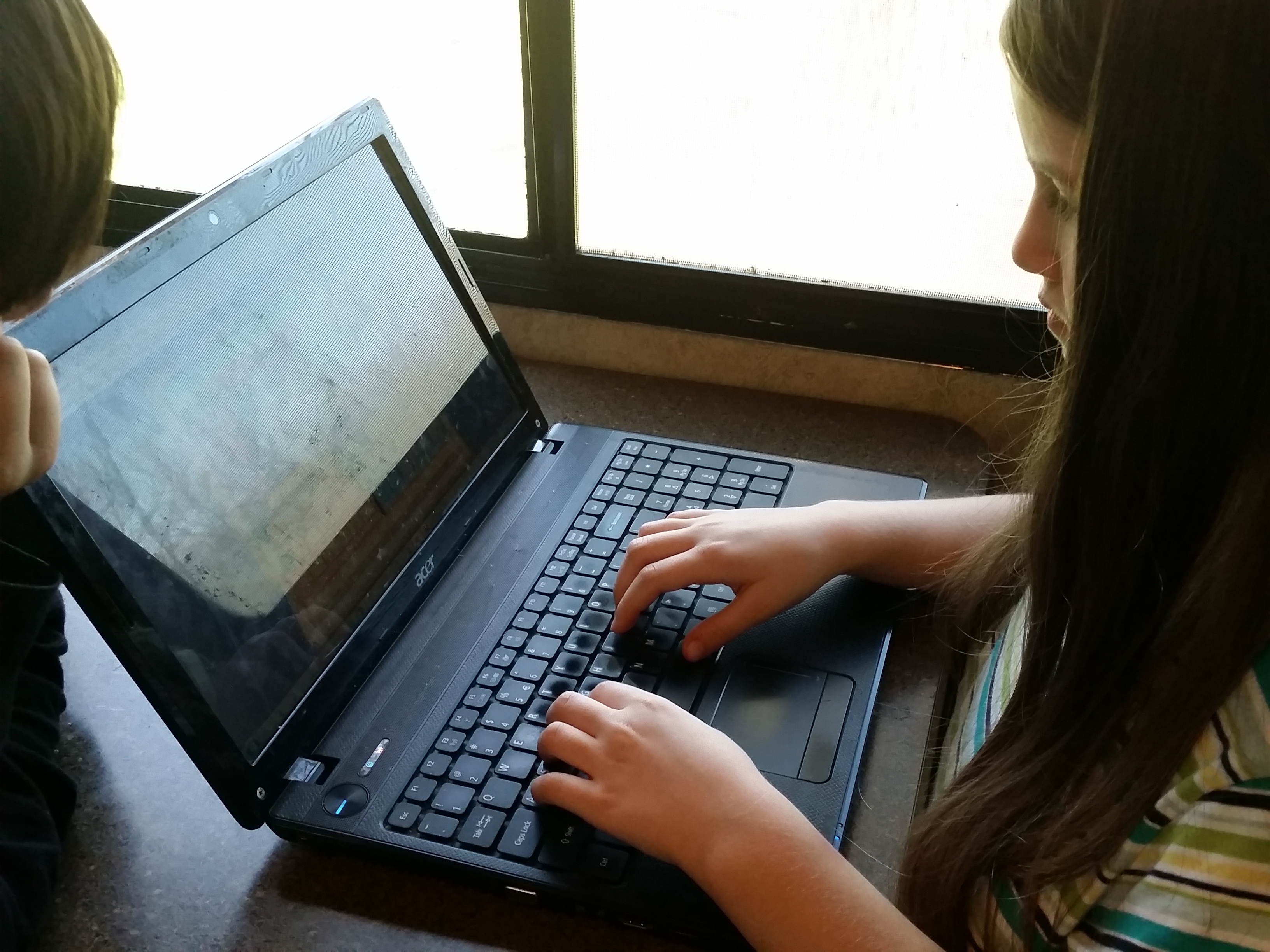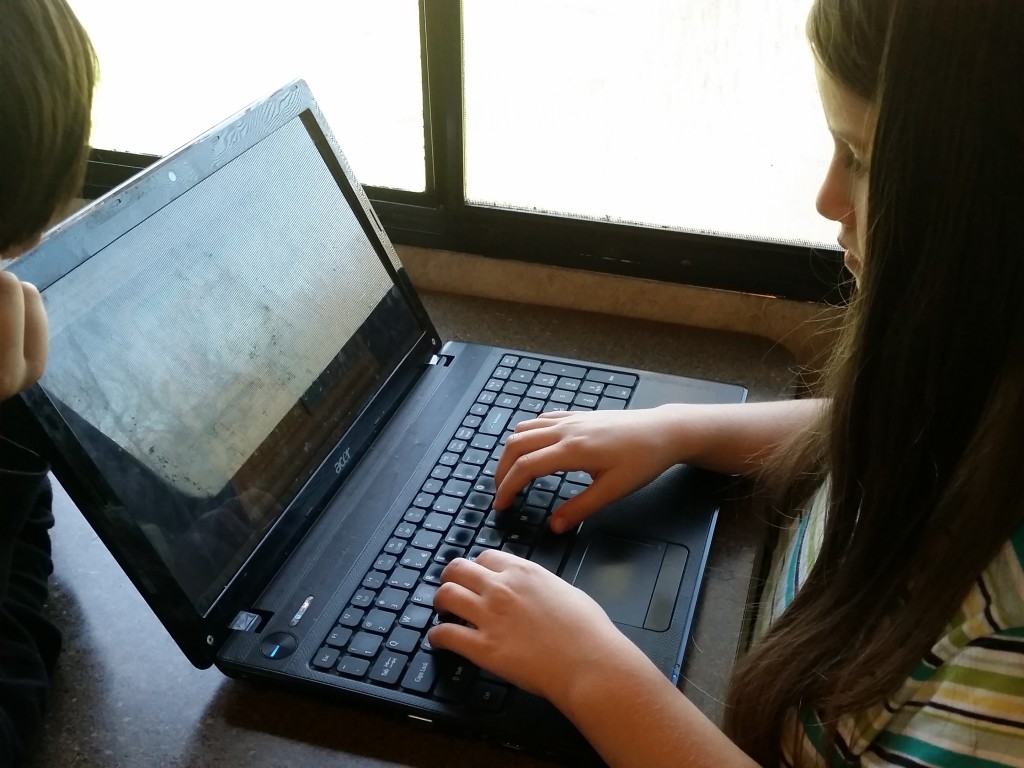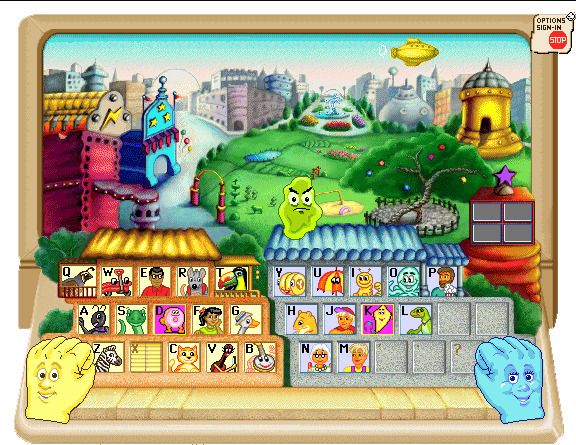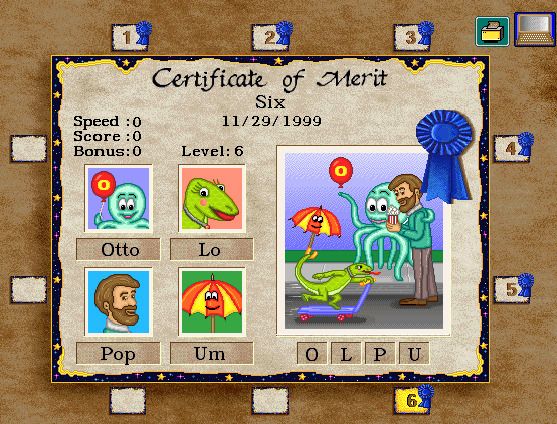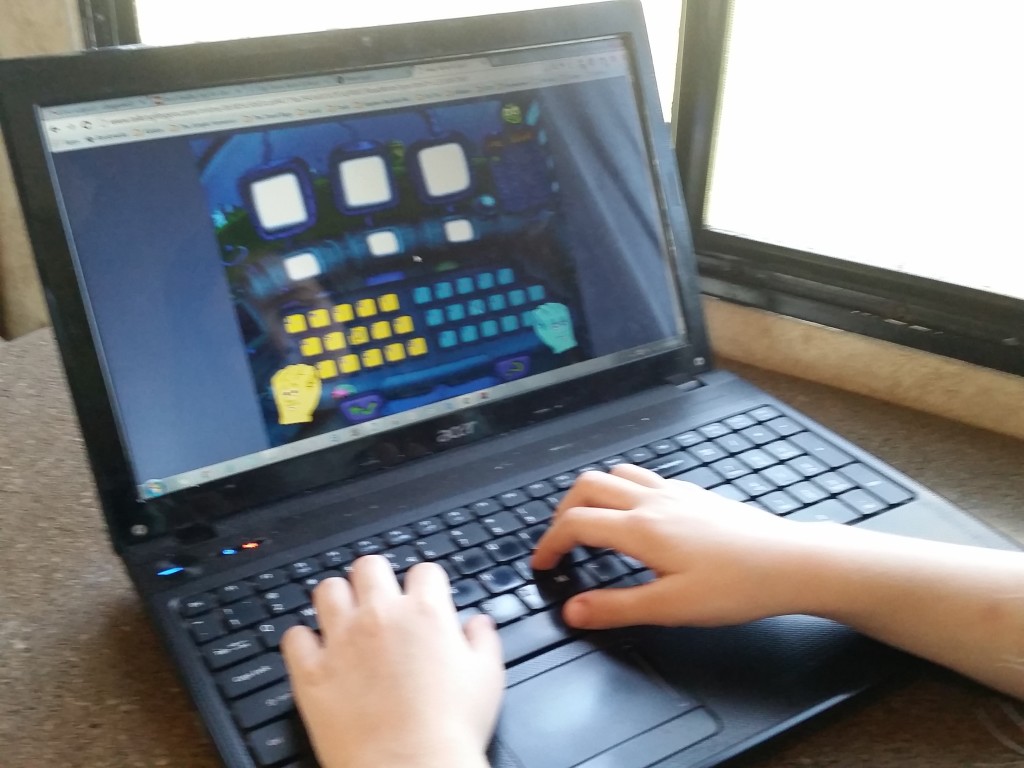We were given a one-year subscription to the online version of Talking Shapes: A Supplemental Curriculum for Early Literacy from Talking Fingers Inc. in exchange for a fair and honest review from my four-year-old daughter, Eliana…with a little help from me. Just a little.
We previously reviewed a Talking Fingers Inc. program called Read, Write, & Type here. Eliana really wanted to try Read, Write, & Type, but was nowhere near that level. Talking Shapes came along as an ideal tool to prepare children for the reading and typing involved in Read, Write, & Type and the other Talking Fingers Inc. programs, but ultimately for reading itself. Happy little Ellie!
Tell me about Talking Shapes.
The idea behind Talking Shapes is to help children understand that their mouths make shapes when they make (or read) a sound. That sound is represented by a letter or a group of letters. Those of us who know how to read sort of take that for granted. Pre-readers, however, need to make the connection between what their eyes see, what shape their mouths form, and what their ears hear.
That is the premise behind Talking Shapes, invented by a neuro…neurophy…by a really smart gal who went to school for a really long time. Her name is Dr. Jeannine Herron. She based the program on reasearch intended to help children engage both sides of the brain as they learn.
It’s ideal for preschoolers, kindergarteners, and other younglings who may be struggling to learn to read.
That’s all fine and good, but what’s the program about?
Essentially the seven-part story involves two girls who invented the alphabet back when togas were all the rage. Each shape the girls talk about corresponds with a letter and an object or animal that begins with that letter sound.
They also emphasize the shape the child’s lips make when they say that letter by looking into a pond while they make shapes. You can use a mirror if you don’t have a pond handy.
That’s great, but does the child like it?
If Ellie is like your kiddos, this program is a hit. It is not dull and repetitive like some phonics programs. It’s a screen–she likes it. I have to put time limits on or she would sit at it all day, even when it gets too hard.
Essentially, she begs to do her lessons. Okay, fine, you can learn, Ellie.
She’s not reading yet, but I don’t push it–I let it happen when it happens. By the end of this program, however, she will know 40 phonograms. Cool, eh? How many do you know? (Are you looking up phonograms in the dictionary right about now?)
What do I think?
People, you know by now that I’m old school and will take a book over a screen any day. I have learned over the past nearly two decades of homeschooling that it isn’t always my preferences that matter. What is most effective and ensures a love of learning is ideal. Of course, I don’t want everything in the world to have to be entertaining to a child in order for them to participate, so a balance is important. You, of course, have your own screen guidelines for your family, so…there you go.
I would rather have Ellie drawing her letters in the sand or on paper than using the mouse to trace a letter on the screen. If you have a touch screen, this is not an issue, but we don’t. That said, when I saw how she maneuvered that mouse, I was very impressed. There was a lot of hand-eye-brain stuff going on there, so I enthusiastically let her continue. Honestly, though, I would prefer it as a quick and convenient app I could whip out on my phone or a tablet rather than a computer program.
Additional thoughts for my fellow roadschoolers:
Internet access–that blessed, cursed subject again. You must have internet access. There are images and movies and this will take a few cookie size bites out of your data. We had a lot of trouble with internet access during this review period, and it did make it difficult. Still, the program wasn’t glitchy or flashing in and out like some do when our “free if you can stand it” access is poor.
Space considerations? None. You already have a computer. Ideally, this would work best on a touch screen, so that’s even less space.
Find out what more conventional homeschoolers think by clicking on the banner below:
Social Media Links:
Facebook: https://www.facebook.com/TalkingFingers/
YouTube: https://www.youtube.com/user/talkingfingersvideo
Twitter: https://twitter.com/ReadWriteType/with_replies

